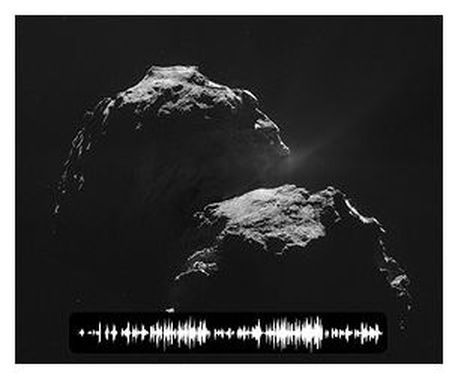Through some kind of interaction in the comet's environment, 67P's weak magnetic field seems to be oscillating at low frequencies.
Plasma is a charged gas and the RPC is tasked with understanding variations in the comet's activity, how 67P's jets of vapour and dust interacts with the solar wind and the dynamic structure of the comet's nucleus and coma. But when recording signals in the 40-50 millihertz frequency range, the RPC scientists stumbled on a surprise - the comet was singing, they report.
Through some kind of interaction in the comet's environment, 67P's weak magnetic field seems to be oscillating at low frequencies. In an effort to better understand this unique 'song', mission scientists have increased the frequency 10,000 times to make it audible to the human ear. First detected in August as Rosetta approached the comet from 100 kilometres, this magnetic oscillation has continued.
Rosetta scientists speculate that the oscillations may be driven by the ionisation of neutral particles from the comet's jets. As they are released into space, they collide with high-energy particles from interplanetary space and become ionised. Because it is electrically charged, the plasma then interacts with the cometary magnetic field, causing oscillations. But to draw any conclusions about this, further work is needed. Source: Discovery News
To read the rest of this article and hear the sound of the 'singing comet' go to :
http://www.sott.net/article/288829-Rosettas-comet-sings-a-mysterious-song

 RSS Feed
RSS Feed